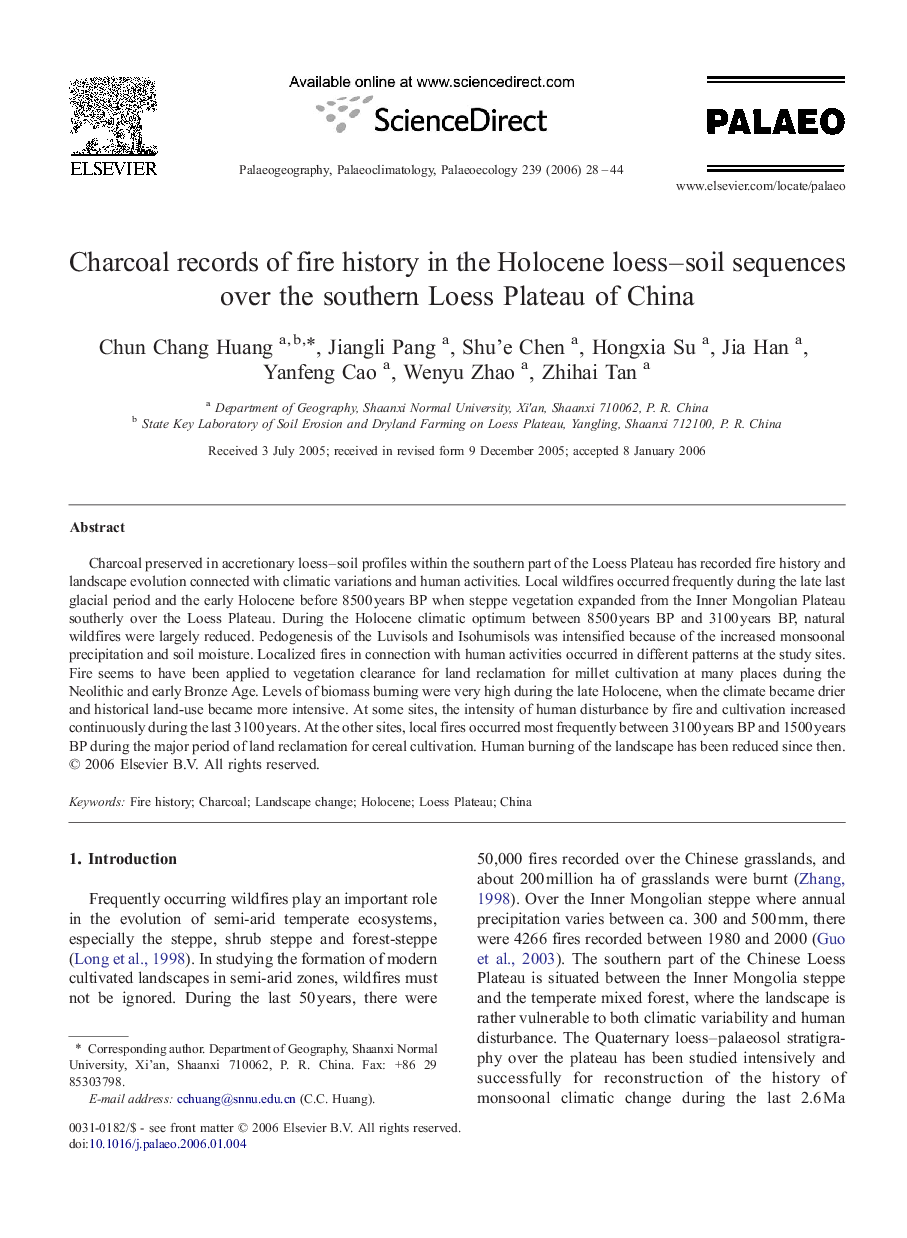| Article ID | Journal | Published Year | Pages | File Type |
|---|---|---|---|---|
| 4469310 | Palaeogeography, Palaeoclimatology, Palaeoecology | 2006 | 17 Pages |
Charcoal preserved in accretionary loess–soil profiles within the southern part of the Loess Plateau has recorded fire history and landscape evolution connected with climatic variations and human activities. Local wildfires occurred frequently during the late last glacial period and the early Holocene before 8500 years BP when steppe vegetation expanded from the Inner Mongolian Plateau southerly over the Loess Plateau. During the Holocene climatic optimum between 8500 years BP and 3100 years BP, natural wildfires were largely reduced. Pedogenesis of the Luvisols and Isohumisols was intensified because of the increased monsoonal precipitation and soil moisture. Localized fires in connection with human activities occurred in different patterns at the study sites. Fire seems to have been applied to vegetation clearance for land reclamation for millet cultivation at many places during the Neolithic and early Bronze Age. Levels of biomass burning were very high during the late Holocene, when the climate became drier and historical land-use became more intensive. At some sites, the intensity of human disturbance by fire and cultivation increased continuously during the last 3100 years. At the other sites, local fires occurred most frequently between 3100 years BP and 1500 years BP during the major period of land reclamation for cereal cultivation. Human burning of the landscape has been reduced since then.
